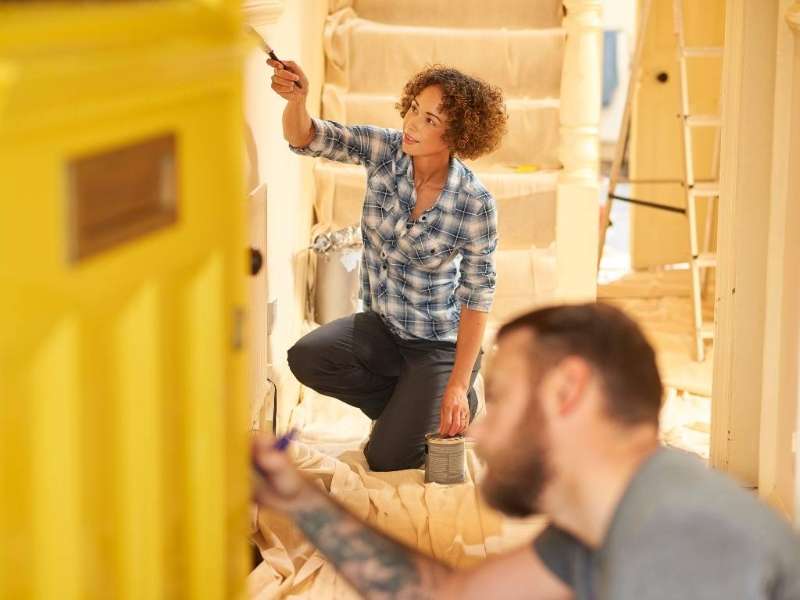How Property Flipping Can Build Real Passive Income
Many professionals reach a point where they want to grow their wealth through property but don’t have the time or technical know-how to manage a full renovation. Flipping often sounds like a hands-on business filled with building work, tight schedules, and endless decisions. In truth, it does take knowledge and planning — but that doesn’t mean you have to do it yourself. With the right guidance and a trusted partner on the ground, property flipping can become a clear, repeatable investment model that builds profit without lifting a hammer. It’s not about swinging tools; it’s about making smart, structured decisions that turn capital into long-term income.
Here’s how a managed, well-planned approach to property flipping can help you move closer to financial independence.
Understanding Passive Income in Property
When people talk about passive income, they often imagine rent coming in each month without much effort. Flipping works differently, but it can still support the same goal. Each successful project creates a profit you can reinvest into other properties that earn steady returns. Think of it as building the cash engine that powers your long-term income plan. By repeating this cycle — buying, improving, selling, and reinvesting — you steadily move from active involvement to financial stability.
Why Property Flipping Is Worth Considering
Flipping fits investors who want faster results than traditional rentals can deliver. Instead of locking money away for years, each project runs for a few months and shows clear outcomes — the purchase, the work, the sale, the return. It’s a hands-on way to learn the market and understand how real value is created. For many busy professionals, it’s also a gateway into property investing — a way to build experience and capital before moving into longer-term holdings.
Turning Flipping into a Managed Process
The key to making flipping sustainable is having a system. Start with a consistent way of assessing deals — location, resale demand, renovation cost, and margin. Work with reliable tradespeople who can deliver on time and to standard. Delegate site management to someone local so you’re not tied to the property day-to-day. Keep a financial buffer for delays or extra costs, and plan alternative exits, such as renting out if the sale market slows. When every step is documented and repeated, flipping stops being guesswork and becomes a measured business process.
The Financial Flow
Flipping generates profit; rentals generate income. The smartest investors use one to fund the other. For example, if you buy a property for £115,000, spend £22,000 on improvements, and sell for £175,000, your net profit is around £27,000. Put half back into your next project and use the other half as a deposit for a buy-to-let. Do that several times and you’re building both cash reserves and ongoing rental income. The flips build the base; the rentals keep it working for you.
Understanding and Managing Risk
Every investment carries risk. The goal isn’t to eliminate it but to manage it well. Overpaying, overspending, or facing slow sales are the most common issues. They can be reduced by having accurate valuations, clear contracts, and strong communication with your team. Always include a contingency fund and have more than one exit option. Property markets change, but disciplined investors stay prepared.
Flipping vs Buy-to-Let — Finding the Balance
Flipping is about movement; buy-to-let is about endurance. One builds capital fast, the other builds income slowly. A healthy portfolio usually needs both. In practice, many Scottish investors flip a few properties to create cash, then keep one or two for rental income. This approach combines flexibility with stability and reduces dependency on any single market condition.
Starting Out Safely
Start small and stay methodical. Learn how your local property market works, especially legal timelines, renovation costs, and resale patterns. Build a team before buying — a reliable builder, an honest agent, and a responsive solicitor are worth more than a discount deal. Track every number and lesson from your first project. You don’t need to scale fast; you need to scale right.
Earning Trust and Building Reputation
In property, your reputation is your strongest asset. Share progress openly with partners or investors. Be honest about challenges and how you solve them. A short, regular update with photos, figures, and next steps builds confidence faster than any sales pitch. Consistency creates credibility — and credibility attracts opportunity.
Keeping It Simple
Don’t overcomplicate your tools. A well-structured spreadsheet, a photo log, and a weekly update routine can keep multiple projects on track. Systems don’t need to be fancy; they just need to be followed. Simplicity is what makes the process repeatable and scalable.
Final Thoughts
Property flipping should be seen as a planned route to build capital that funds future passive income — not a shortcut to instant wealth. With structure, guidance, and the right local support, it becomes a smart and practical investment path. Every project builds knowledge, discipline, and financial strength that carry into the next. Over time, the profits from flips can create a portfolio that continues to grow even when you’re not actively involved.
I help ambitious individuals create their own long-term wealth plan. I’m the trusted partner on the ground in Scotland and the UK, sourcing, refurbishing, and managing profitable portfolios — ideal for busy professionals, investors, or those living abroad.
Learn how property flipping works for investors — visit the Flipping Investment page to see current opportunities and guidance.



































